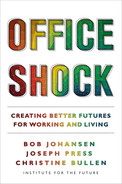INTRODUCTION
The Great Opportunity
Why do we work in offices at all?
Office shock is abrupt, unsettling change in where, how, when, and even why we work. Office shock and echoing aftershocks will continue indefinitely in unpredictable patterns.
COVID-19 was one of many jaggedly ugly shocks such as chronic climate emergencies, systemic racism, and gender inequality. The mules of war are still with us, but future wars will be weirdly different. Cyber warfare and cyber terrorism will be possible in forms never imagined. Ugly still, but in different ways.
We are facing a rolling risk of further pandemics and further shocks. Office workers, corporations, and policy makers will be shocked, again and again, into making hard choices about where, when, and how we work. Many office workers will refuse to go back to offices the way they were. Unsettling change, however, includes great opportunities—despite all the threats, challenges, and fears around us. Our goal is to help you find your own clarity about offices while avoiding the dangers of certainty. Even with ugliness, there will be unprecedented opportunity.
Hybrid work and flexibility are now normalized, but the future of work is up for grabs. Office shock will continue for many years to come. And that can be an opportunity.
Offices, Officing, Officeverse
Work is about how we come together to make things happen. In the past, most knowledge work was organized in and around office buildings. Gathering in person in buildings was assumed necessary for orientation, trust building, early-stage creativity, and renewal.
Many leaders still assume that organizational culture must be created and sustained through in-person interaction in office buildings. But will those beliefs continue to hold true? Will there be alternatives?
Office shock has revealed hidden assumptions about what might be done without office buildings. There are no proven answers yet, but alternatives are budding everywhere.
The office is a place, but it is also a process.
![]() Office is a noun. Office places are mostly in buildings, but that’s changing.
Office is a noun. Office places are mostly in buildings, but that’s changing.
![]() Officing is a verb that describes work processes and social interaction to get work done.
Officing is a verb that describes work processes and social interaction to get work done.
![]() Officeverse is the future anytime/anyplace world of where you will work, when you will work, and how you will work.
Officeverse is the future anytime/anyplace world of where you will work, when you will work, and how you will work.
Office Work without Offices
Office shock has already created work/life challenges that many people flipped into positives. The experience of working from home during the pandemic, however, was often deeply unfair. Many privileged people loved the flexibility and thrived, but for people with small workspaces at home or little kids and no childcare, the experience was often stressful and sometimes traumatizing. For many the new flexibility was liberating; for others it was awful. But the future of office work doesn’t have to be that unfair.
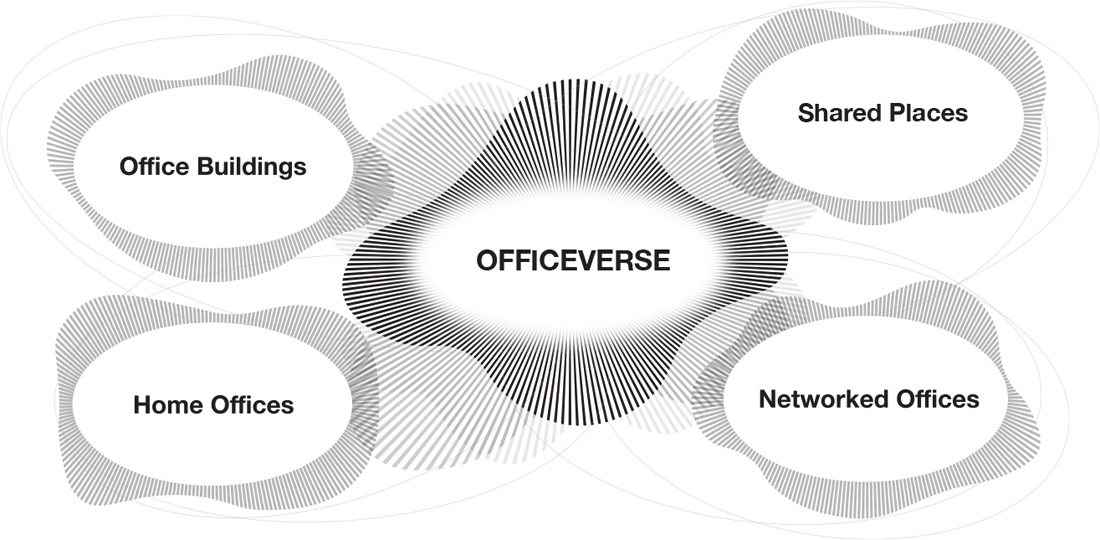
FIGURE 1: Officeverse Emerging. The ever-evolving mix of work, place, and time options will shape new models, with new choices for working and living.
During COVID-19 office shutdowns, many companies reported that they were more productive virtually than in their old office buildings—despite all the pandemic fear and confusion. Shockingly, everyday people with no special training did office work without offices.
In the face of unprecedented office shock, you can be future-ready. We call the range of options from which you will be able to choose for offices and officing the officeverse. As conceived in figure 1, the officeverse is an archipelago of anytime/anyplace mixes of media—including office buildings—that you will be able to choose among to determine where, when, and how you work.
The officeverse is still emerging, building on ubiquitous connectivity. The officeverse will defy any corporate control. The global pandemic office shutdowns demanded abrupt radical changes in behavior. Fortunately, fifty years of technology testing and limited-scale use was up to the task, so virtual working worked surprisingly well.
COVID-19 plus the internet meant impossible officing futures became possible with little forewarning.
As Satya Nadella, the CEO of Microsoft, said during the COVID-19 crisis: “As we are coming out of this pandemic and its various stages . . . not only are people talking about when, where, and how they work but also why they work.”1 Indeed, why we work is now at the epicenter of office shock.
Evolution in technology use that would have taken years happened almost overnight during COVID-19, but wild cards—we call them mules—were unleashed. Office shock has only just begun.
Mules Are Loose in the Office
It is difficult to even talk about the future of offices and officing without relying on language that doesn’t capture what we are trying to imagine. As futurists, we often turn to fiction for inspiration in situations like this. Science fiction and fantasy help us to stretch how we think and explore the future through the power of stories. Fiction gives us new language and agency. Stories help us imagine and engage with futures we have trouble imagining.
In Isaac Asimov’s enduring Foundation trilogy,2 mathematician Hari Seldon invents a new academic discipline he calls psychohistory, an algorithmic science that accurately predicts the future. Then shockingly, a mutant creature named the Mule kicks through their algorithms and suddenly the predictable future becomes unpredictable.
The Mule was impossible—until it wasn’t. Office shock will be filled with unpredictable wild cards. In this book, with a tip of the hat to Isaac Asimov, we call them mules.
COVID-19 was a mule, and it will not be the last pandemic mule. In the future, we will confront the rolling risk of pandemics and other global emergencies that arise at the intersection of human health, animal health, insect health, and land use. Public health officials use the eerie label interpandemic to describe the uncertain state of life going forward herky-jerky between pandemics. Think interpandemic, not end of pandemics.
COVID-19 plus the internet was the catalyst for office shock and the impossible futures for offices and officing that are now possible. But how can we imagine what’s next? What futures can we imagine in this time of great fear and great opportunity?
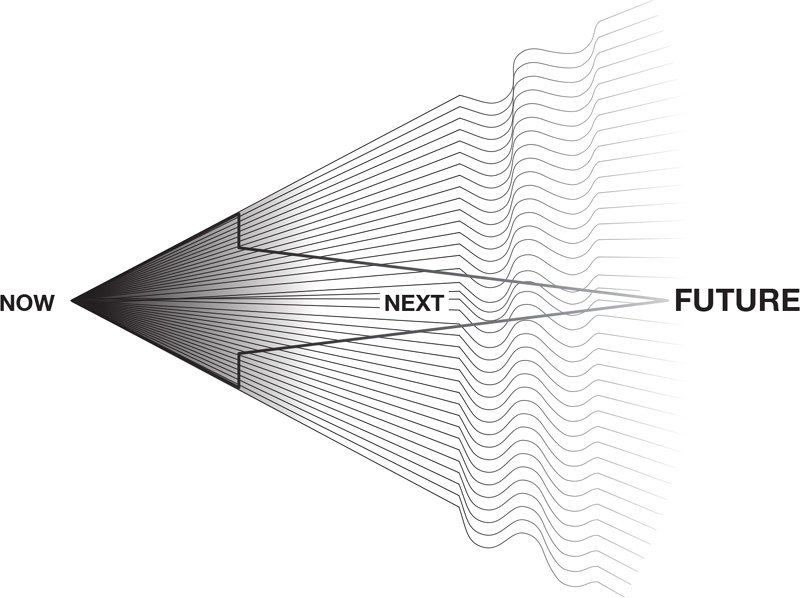
FIGURE 2: Futureback Thinking. Thinking backward from the future rather than from the present-forward.
Think Futureback
The present is so noisy, so painfully and violently noisy.
Many people are stuck in a cage called now while occasionally thinking about what’s next and only rarely thinking about the future.
We need to release ourselves from thinking only present-forward. Being here now and mindful can be virtuous, but not if we are trapped in the now. Are you stuck in the present? Do you feel owned by the present? If so, you need future-back thinking to explore where the mules will be heading.
Looking long will help you find your clarity so you can be very clear about your direction but very flexible about how you will get there. You can be clear; you cannot be certain.
In times like these, thinking futureback—future, next, now—is much more revealing than thinking present-forward.
Think about the FUTURE,
then what’s NEXT,
and then the NOW.
Most people today, however, are stuck in linear time: Now, next, future. Most people are locked unconsciously in what neuroscientists call “The Eternal Now.” Thinking present-forward means that you can see only incremental change, but you are blinded by unexamined categorical thinking that makes the unprecedented seem impossible. Present-forward thinking keeps you in cautious lockstep and hides any future you cannot bring yourself to imagine.
We need to move from thinking present-forward to thinking future-back. As summarized in figure 2, we require a shift in mindset.
Surprisingly, looking ten years ahead is easier than just a year or two ahead. For example, thinking futureback from ten years ahead, it is obvious that sensors will be everywhere, they will be very cheap, many of them will be connected, and some of them will be in our bodies—and the bodies of our pets. Already, many people wear body sensors like smart watches that track biometrics. Ten years from now, most people who want one and can afford it will be wearing a body sensor, and many people will have embedded body sensors. Looking futureback, it is obvious that sensors will be everywhere in the office and the officeverse. The direction of change regarding sensors is clear when you think futureback, even though the implications are not.
If we learn to think futureback, we can see the mules before they arrive in a cloud of dust.
Many More Mules Are Coming
Like the Mule in Foundation, the internet, the connective tissue for offices and distributed work around the world, is a mule. The extension of the internet called the metaverse will be yet another species of mule. Coined originally as a science-fiction concept in 1992, the metaverse has become an umbrella term for the next generation of the internet.3 It will be a nested network of networks that won’t be owned or controlled by anyone—though many will try.4 In this book, we use the term officeverse to describe the metaverse for offices. A continuing herd of mules will shape the officeverse, including virtual reality, deepfakes, cryptocurrencies, blockchain, ultra-wideband media, machine intelligence, Web3, and quantum computing. The early internet was a mule disguised as computer-to-computer data exchange, the metaverse is a mule disguised as an immersive social media platform, while the officeverse will be a mule disguised as networked offices.
Like the Mule in Foundation, future office shocks will be unpredictable and unprecedented. The next shocks could be good or evil—or good and evil. Office shocks will open new opportunities and new choices for individuals, organizations, and for policy makers. Our choices will tip the balance for good or evil. People and organizations will be either more or less future-ready. This book will help you prepare to benefit from the opportunities and protect yourself from the threats. The mules will stampede.
Impossible Futures Are Now Possible
People with desk jobs scrambled in the wake of office evacuations. They were disoriented and confused—but shockingly productive. While COVID-19 was a global public health tragedy, it opened an unprecedented opportunity to challenge our assumptions and expectations about office work. It became possible to create hitherto impossible futures for living and working.
What used to be perceived as impossible is now—suddenly because of office shock—possible. Imagining the office of the future will require us to prepare for and embrace surprise. Office shock invites us to envision a world where impossible futures are possible, where you can harness the mules.
We wrote this book to help individuals, organizations, and communities to create stories that inspire us all to create better futures for working and living. Imagine future offices . . .
![]() where purpose-driven people work for purpose-driven organizations.
where purpose-driven people work for purpose-driven organizations.
![]() that contribute to prosperity for stakeholders as well as shareholders.
that contribute to prosperity for stakeholders as well as shareholders.
![]() with climate positive activities that regenerate the planet.
with climate positive activities that regenerate the planet.
![]() that thrive on diversity and equity by providing an authentic sense of belonging for purposely different people.
that thrive on diversity and equity by providing an authentic sense of belonging for purposely different people.
![]() where people and computers work together as “superminds” to do things that have never been done before.5
where people and computers work together as “superminds” to do things that have never been done before.5
![]() that operate anywhere, are available anytime, with people empowered to decide what options are best to achieve which objectives.
that operate anywhere, are available anytime, with people empowered to decide what options are best to achieve which objectives.
![]() designed for agility and resilience, where hierarchies shift based on who is in the best position to make which decisions at what times.
designed for agility and resilience, where hierarchies shift based on who is in the best position to make which decisions at what times.
The world of work will never be the same again. The mules are here, and they aren’t leaving. Office shock will rush in with too much change in too short a time, but it is packed with positive potential. We cannot go back to the office the way it was, but we can make better choices to improve working and living.
The Office Shock Mixing Board
Offices do not need to remain places stuck in the past. Offices can be exciting places with purpose, enabled by new ways of working and empowered by new technologies to achieve real impact. Office shock opens new opportunities to reimagine how, when, and where “office work” can and should be done in the future.
Mules are tearing up the traditional office, so we’ve created Seven Spectrums of Choice that will help you break out and start thinking futureback about offices and officing.
Office shock is not just about when to go back to the office. It’s about opening possibilities for human connection in more meaningful ways. Office shock and its aftershocks will demand that people transform their organizations and themselves.
To prepare for the opportunities of office shock, every individual office worker, organization, and policy maker should ask, in this order:
1. What is the purpose of your office and officing? First, consider the personal benefits to the people who work in offices—especially young people. Then ask about collective purpose for organizations and communities. This is not an either/or choice; it is a spectrum between the polarities of individual and collective. Purpose should be your first spectrum of choice. Why do you want an office at all?
2. What are the desired outcomes you aim to achieve with your office and by your office activities? What results is your office seeking? What consequences are you seeking for your shareholders and stakeholders? While purpose is about intentions, outcomes are about results—and target results will depend on you and your organization’s value systems.
3. What will be the climate impact of your office buildings and the ways you are working? We believe that the most important outcome over the next ten years will be the climate impact. To date, office buildings have been more harmful to the environment than helpful. Net-zero impacts, where your office and its activities do not contribute to greenhouse gas emissions in the environment, should be the minimum. We’re already at a point now where offices must be climate positive and regenerative.
4. With whom do you want to office? This is the spectrum of belonging. In most traditional offices, people look alike, dress alike, and talk alike. Familiarity breeds comfort, cooperation, and understanding. Thinking futureback, however, diversity will be everywhere so offices will need to learn how to rethink inclusion and belonging. In the future, diversity will be a given and purposely different will be a goal.
5. How will you amplify the intelligence of your office? This is the spectrum of augmentation. Thinking futureback, we will all be cyborgs—part human part computer. Which activities do we want to keep for ourselves and which do we want to augment?
6. Where and when will you office? The question many companies are asking is when to return to the office, but that is not the first question you should ask, it is number six out of the Seven Spectrums of Choice. It is an important question, but it should not be the starting point.
7. How will you design an agile resilient office? Finally, how do you put it all together and act with resilience to make smart choices in an increasingly complicated future?
These questions demonstrate the need for clarity and nimbleness in these times of great uncertainty. You must harmonize your choices within each and then across the roles you play. These are not either/or choices, they are both/and.
To assist you, we have framed these spectrums of choice into a metaphorical mixing board.6 As illustrated in figure 3 and included in the Quick Start Guide just before the beginning of part II of this book, the mixing board has sliding scales representing the range of options office shock has revealed. Also in part II of this book, we have a full chapter on each spectrum of choice to explore the range of options between each polarity.
The choices along this journey are neither binary nor easy. For example, a single individual can get a thrill out of creating a new product. The dopamine rush motivating that person’s brain to innovate is real and exciting. If that same innovator also works for a large corporation where their product idea is linked to the corporate purpose, it is possible to be an intrapreneur who is rewarded personally and collectively. If that same innovation improves the daily lives of children in the outside world, then there is a larger purpose being served beyond the organization with positive outcomes. If the innovation is a success on all fronts, it can benefit users as well as corporate shareholders and stakeholders.7
The mixing board invites you to consider both ends of the spectrums. You should not go to either extreme because there is value in reflecting on both ends of each spectrum. You must harmonize the polarities, and the best way to do that is to think futureback to figure out your clarity of direction.
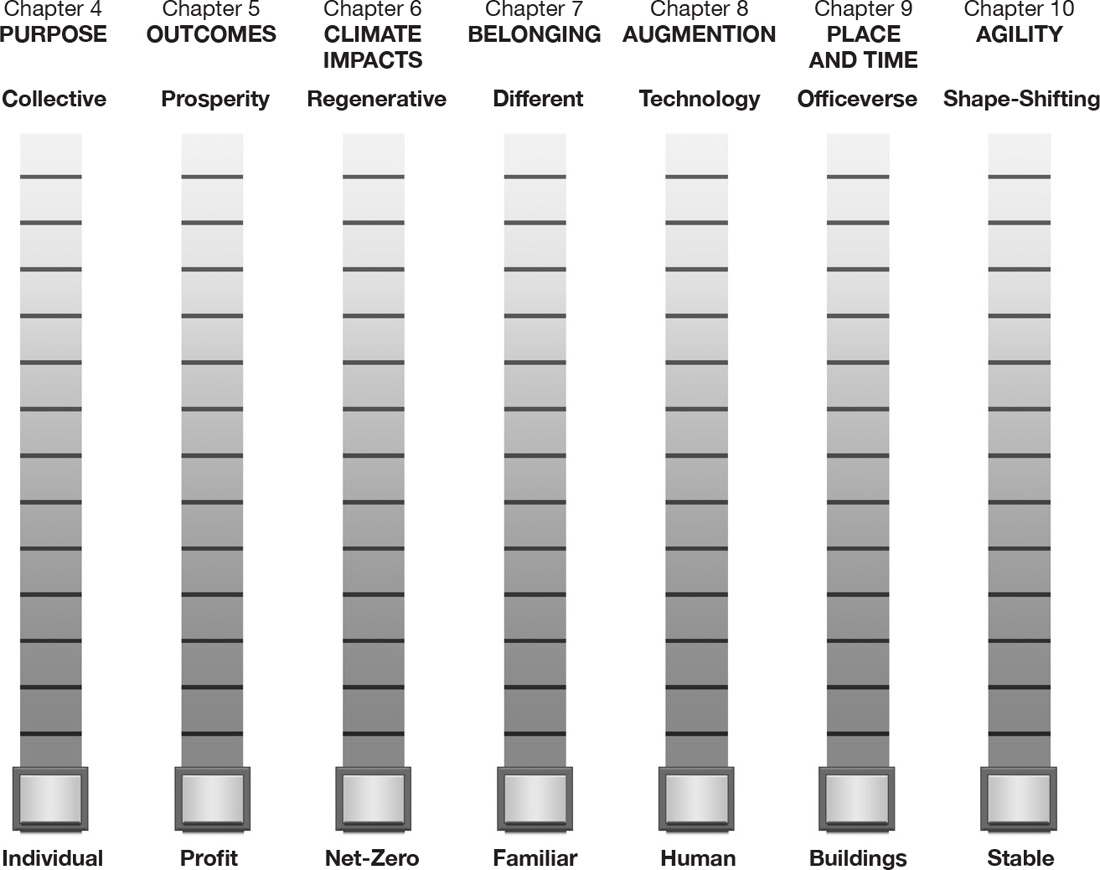
FIGURE 3: Office Shock Mixing Board. A visual metaphor illustrating the Seven Spectrums of Choice.
Harmonizing Within and Across the Seven Spectrums
In part III, we move into a format designed to help you write your own stories about the future of offices and officing. This is where we provide coaching for individuals, organizations, and communities.
Chapter 11 introduces our Quick Start Guide for how to use the mixing board to make your own choices as an individual worker, an organization with offices, or a policy maker. For each spectrum of choice, we ask you to “move the slider” between the two polarities to reflect your choices. Thinking futureback will help to first harmonize within each polarity, and then to harmonize across the seven spectrums. This will be about finding the best possible mix; it is about finding the best mix, the one that will set your course toward a better future of working and living.
Thinking futureback will help you develop clarity of direction about where, when, and why you work, but you must stay very agile about how we get to that future. We will have to prototype our way out of the noisy present. Thinking futureback will help bridge divides.
To think futureback, you must leap out ten years and imagine impossible offices. Then you can work backward from the future and make better decisions in the present. We must harmonize within and across the Seven Spectrums of Choice. By harmonize, we mean that you must move the slider in search of combinations that work well (as in sound good) together.
Office Shock Is a Futureback Story
In this book, we apply futureback thinking to help make sense out of office shock, as illustrated in figure 4. We start the book by focusing on the FUTURE (part I), to anticipate directions of change and increase your clarity. NEXT (part II), we introduce the Seven Spectrums of Choice about offices and officing. Finally, we end on the NOW (part III) for individuals, organizations, and communities.
In this book, we will guide you through the application of futureback thinking to imagine impossible futures, harness the mules, and create better futures for working. We will apply full-spectrum thinking and storymaking to rise above the noise of the present.8 We will give you the tools, perspective, and choices that you can use to create your own story for yourself, your organization, and your community. The best way to harmonize is to think futureback to avoid getting caught up in the polarities of the present.
Synchronizing Individual, Organizational, and Community Choices
After you harmonize your choices across the Seven Spectrums of Choice, you must synchronize your choices so that they benefit individuals, organizations, and society. In part III, we offer our Quick Start Guide (pull out the book insert after page 60) with 4 steps to co-create your own future story for offices and officing:
1. Find Your Future Self, as an individual, as part of an organization, and as part of a community. How do these three aspects of your Future Self mesh together?
2. What Future? Set your intent, your navigational star, with flexibility as to how you might get there. Seek clarity but resist certainty. We call it flexive intent.
3. What Next? Make your choices on the Seven Spectrums of Choice for offices and officing. Harmonize within each spectrum and across the seven spectrums.
4. What Now? Lead futureback with flexive intent that is expressed in a compelling story. Synchronize with your individual, organizational, and community critical success factors to move forward together.
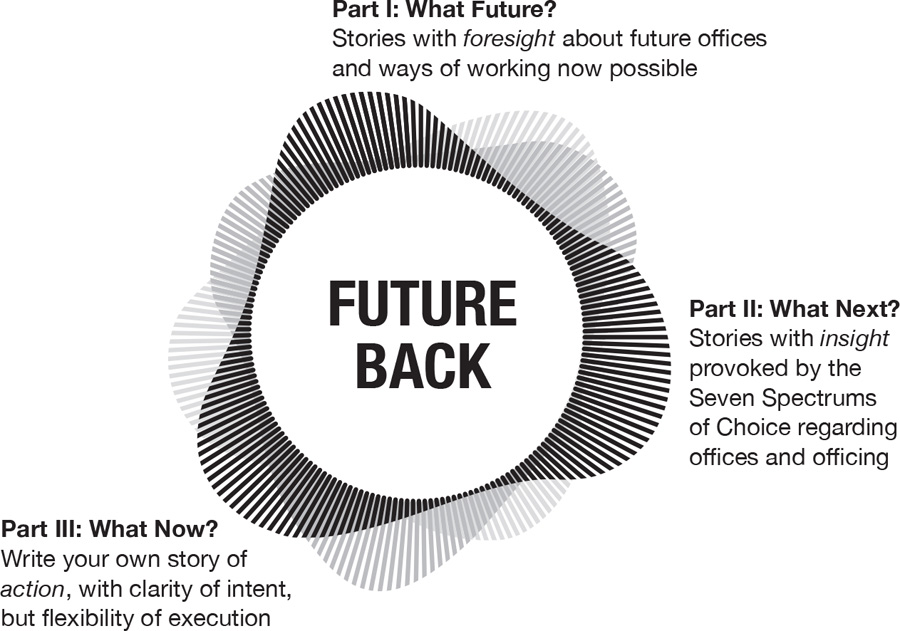
FIGURE 4: The Office Shock Book Storyline.
In chapters 12, 13, and 14, we provide guides for creating your own synchronized stories about the future of offices and officing, for individuals, organizations, and government policy makers. Ideally, individuals will be in sync with their organizations and communities. The best way to synchronize is to think futureback.
Our goal is to stimulate a new conversation that will cultivate a community of leaders willing to turn office shock into a great opportunity. We are urgent optimists: we believe we can spark a deeper dialogue that will flip the challenges into opportunities.
We can be helpful in making the right choices in this dynamic world of changes. We believe that “. . . if we act consciously we evolve consciously, but if we act unconsciously, we evolve unconsciously.”9
It is now possible to create ways of working that would have been perceived as impossible in earlier times. We can choose to create better ways of working and living. You can write your own stories about distributed work. Playing through office shock will be like riding a bucking mule. This book will help you have a great ride.
